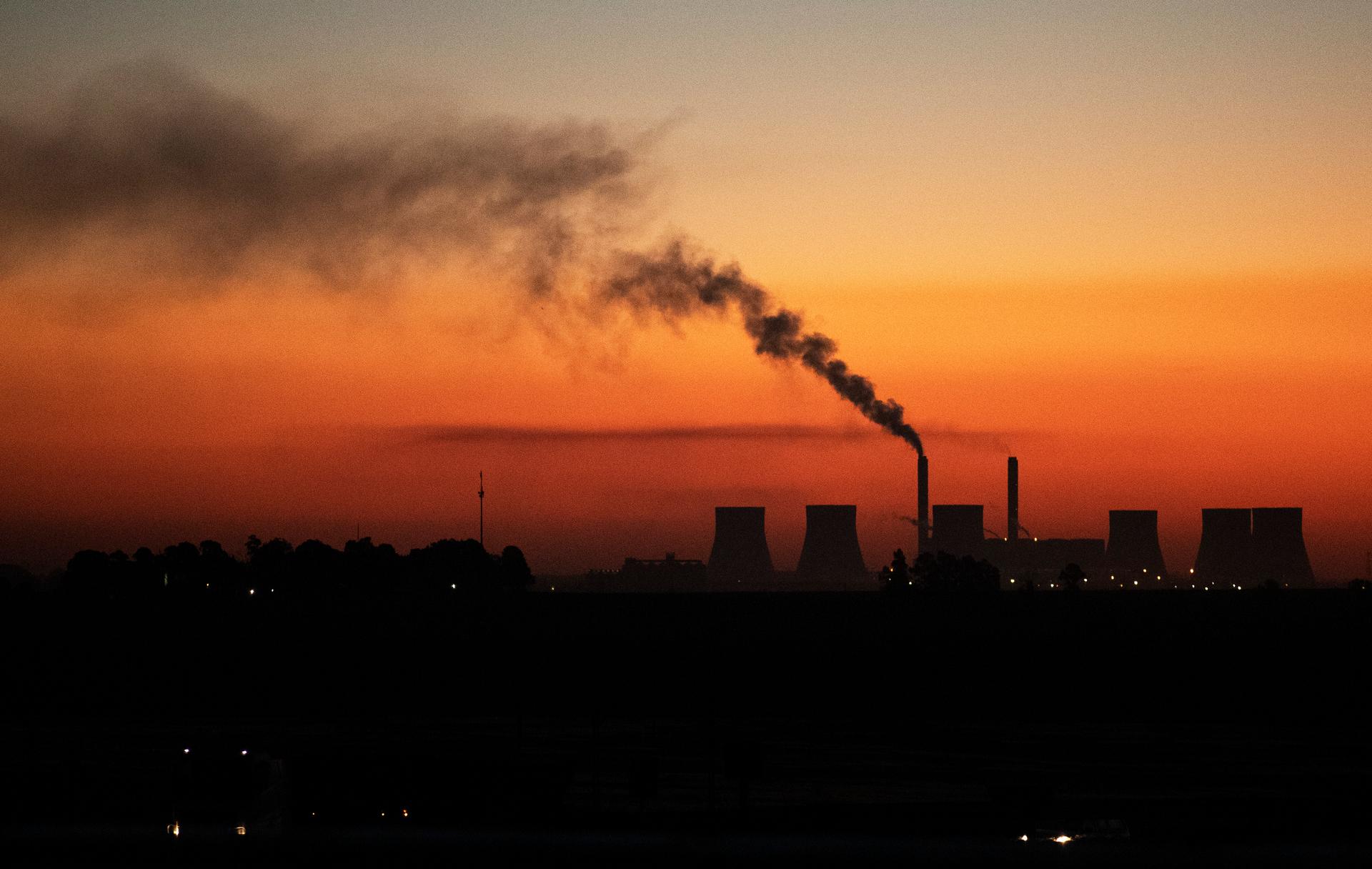The United States and several European nations have agreed to provide $8.5 billion dollars to help South Africa phase out its use of coal.
More than 80% of South Africa’s electricity comes from coal, making it the largest carbon emitter in Africa.
Eskom, the state utility company that provides more than 90% of the electricity used in South Africa, is currently drowning in more than $27 billion of debt and, as a result, can’t generate power consistently to its customers.
The national power grid in South Africa is simply not working, says Jesse Burton, a senior associate with the think tank E3G, which provides analysis and advice for socially just coal transitions in South Africa and globally.
“[S]outh Africa is incredibly coal dependent. We get about 87% of our electricity from coal-fired power plants…”
“We’re facing something called ‘load shedding’… which really just means Eskom is not meeting demand,” Burton explains. “[S]outh Africa is incredibly coal dependent. We get about 87% of our electricity from coal-fired power plants; a little bit, about 5%, from wind and solar; and a small contribution from nuclear and hydro and some imports.”
Two new power plants that Eskom is building are not working well and at the same time, the rest of its plants are very old, Burton says.
“[It’s] kind of similar to the US in many ways,” she notes. “A lot of the plants were built in the ’60s and ’70s and ’80s and they haven’t been maintained very well and they’re kind of falling over, like an old car that you haven’t maintained.”
Related: China, top global emitter, aims to go carbon-neutral by 2060
Paradoxically, coal has been the backbone of development in South Africa, Burton notes. Cheap electricity “created the basis for all the industry in the country. At the same time, it’s been accompanied by this deep environmental injustice,” she says.
Most of the coal mines and the coal plants are located within a 62-mile radius in a province called Mpumalanga. The regions suffers from severe air and water pollution problems. The most polluted river catchment in the country, the Olifants catchment, runs through the mining areas and the air contains “extraordinarily high levels of particulates,” in addition to high levels of sulfur oxides and nitrogen oxides, Burton notes.
“The South African government’s own health study…[concluded] that air pollution in Mpumalanga leads to the premature death of about 5,000 people per year.”
“The South African government’s own health study, which was recently leaked — it wasn’t even released, it was discovered through some litigation that civil society is undertaking to try and force the government to implement its own air pollution laws — [concluded] that air pollution in Mpumalanga leads to the premature death of about 5,000 people per year and [there is] twice as much asthma in the region as anywhere else,” Burton says. “So, it just comes with these enormous costs.”
Related: Fossil fuels cause 1 in 5 premature deaths worldwide, study says
There are also issues around degraded land, which impacts people’s health. “We hear from activists on the ground that people who’ve grown up in the region who want to work in mining — because this is the only sector that has any growth in the area, in part because other sectors are put at risk by these kinds of impacts in health and water and air — are often too sick to pass the health tests that you need to pass to get into mining,” Burton says.
South Africa as a whole has incredibly high levels of unemployment, Burton notes — 45% unemployment throughout the country and slightly higher in Mpumalanga province itself. Unemployment rates are even worse among South Africa’s youth. “If you’re a young Black woman, unemployment levels are almost 70%. So, it’s incredibly difficult,” Burton says.
Which makes the pledges made by the US and a number or European countries at COP26 hugely important.
“I think this is a test case for seeing how coal-intensive developing countries — and there are a lot of them — can be supported in this way.”
“This is the first time a country-led, donor-supported process like this is going to unfold in this way. … I think this is a test case for seeing how coal-intensive developing countries — and there are a lot of them — can be supported in this way,” she explains. “It’s fascinating to see because now we’re getting down to talking: What is it going to take to decarbonize the power sector or to get to that low NDC range en route to decarbonization? Well, it requires a huge build out of transmission infrastructure. We’ve got to build 40 gigawatts of wind and solar over the next decade. At the moment, we’ve only got six gigawatts installed, so it’s a huge scale up.”
Related: America’s leading coal state looks to the wind
This “just energy transition partnership” is a way for developed countries to deliver on the support and financing they have for years been promising to developing countries, Burton adds.
“What made me very optimistic about it is that the political declaration very much centers just transition,” she says. “It acknowledges all of these constraints. It acknowledges that South Africa has an employment crisis, that looking after fossil fuel workers is important, that you have to look at the mining value chain and the communities in Mpumalanga.
“I feel quite inspired, actually. I hope it happens. Of course, we wanted to be ambitious, we want it to be transformational and we have to work to make that happen. It won’t just happen automatically. But I think the runway is there to have a just transition in South Africa and that makes me really excited.”
This article is written by Adam Wernick, based on an interview that aired on Living on Earth from PRX.
